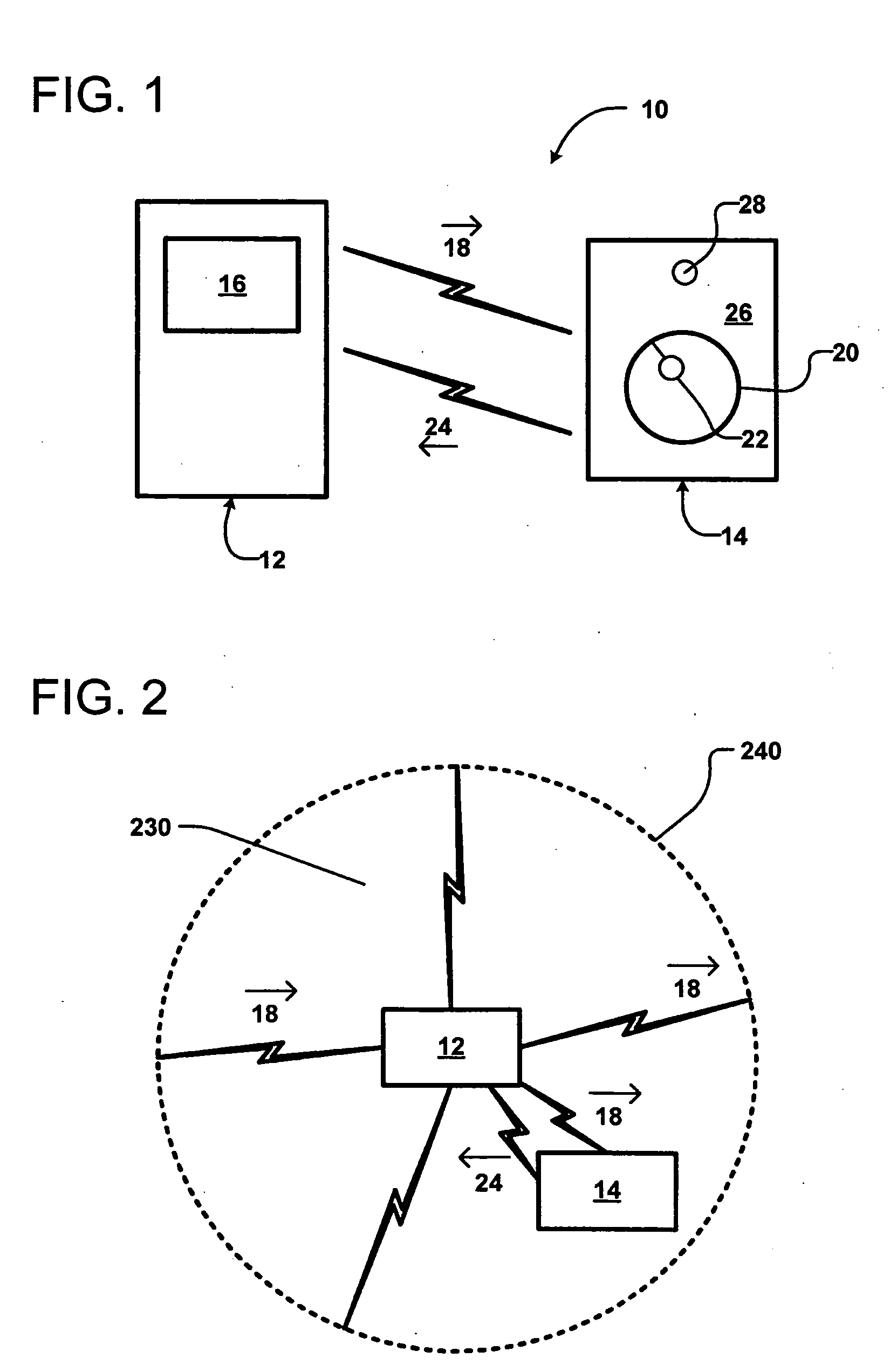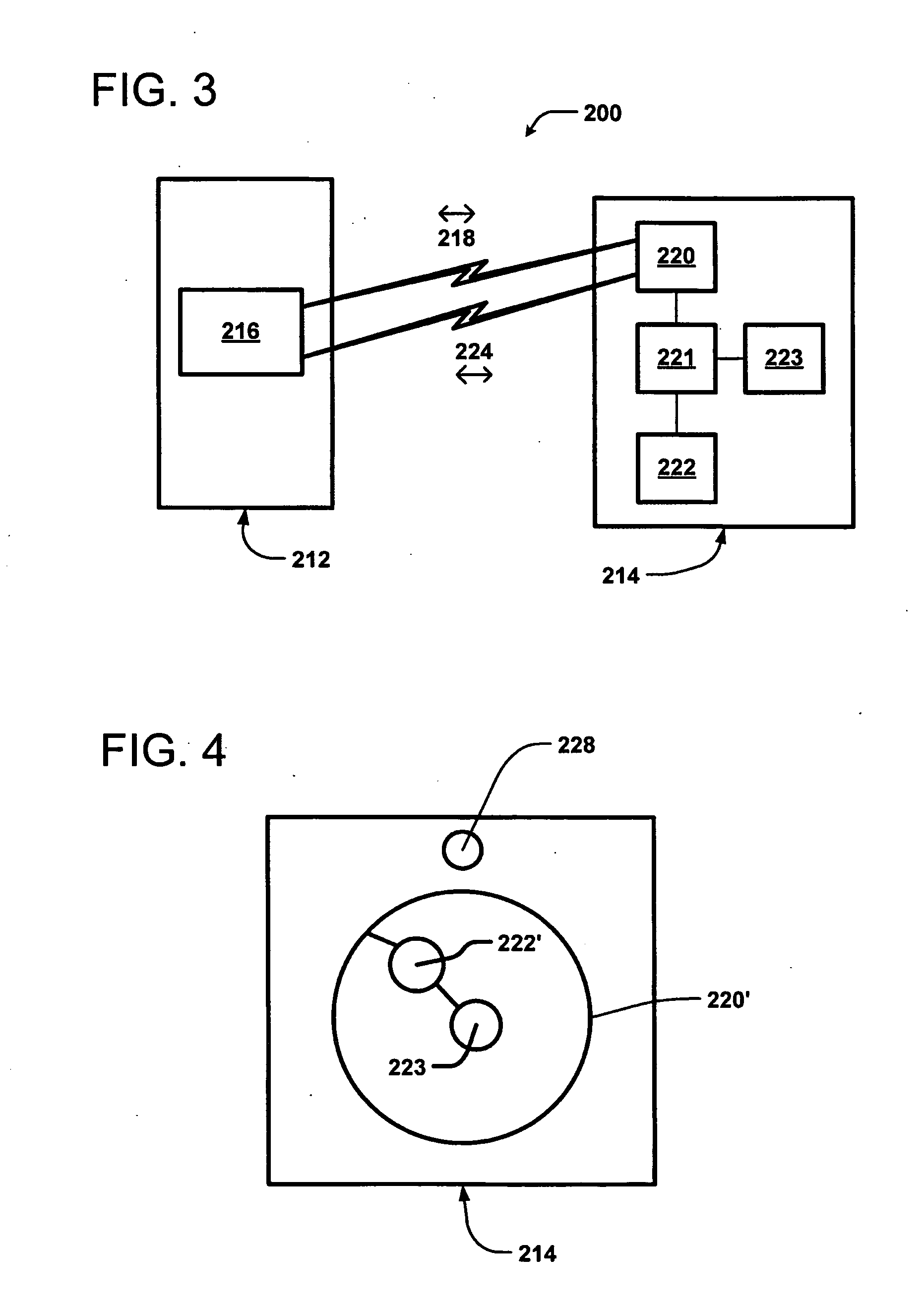Radio frequency animal tracking system
- Summary
- Abstract
- Description
- Claims
- Application Information
AI Technical Summary
Benefits of technology
Problems solved by technology
Method used
Image
Examples
first embodiment
[0070]Referring now to FIGS. 3-6, there are a variety of combinations of fully- and semi-powered transmission capabilities that may be included within the present invention. a tag management system 200 includes a base station 212, also commonly referred to as a reader, and a transponder 214, also commonly referred to as an identification tag.
[0071]The base station 212 includes a transceiver 216 for emitting and receiving radio waves 218 to generate an electromagnetic field 230 over a geographic area 240 (see FIG. 5). In one embodiment, the frequency of the radio waves can be the standard frequency of 134.2 kHz. Of course, higher and lower radio wave frequencies are consistent with the scope of the disclosure. In some embodiments, the electromagnetic field 230 produced by the base station 212 is maintained over the geographic area 240 continuously. In other embodiments, the field 230 is generated at predetermined intervals. In one embodiment, the field 230 is generated at regular, pe...
embodiment 130
[0122]As shown in FIG. 15, a string of tags 122 formed on substrate 100 is maintained in a continuous strip 124, which may be fanfolded, rolled or otherwise packaged for sending to a producer, an auction lot, or other location within the animal production process. In an embodiment, tags 122 in strip 124 are inserted within a printing and encoding device 130 that may be positioned chute or corral side for ease of operation. Each of the tags 122 is pre-molded and encoded with a government issued identifier. Each of the tags 122 also includes area 128 for printing, embossing or otherwise marking with a local or management identifier. Area 128 allows a printing head 134 of chute side printer and encoder 130 to be used to apply a specific marking immediately prior to tag 122 being attached to the animal. While a novel printer / encoder embodiment 130 is described and shown herein, it is anticipated that tags 122 and strip 124 may be used with conventional printers currently in use for prin...
PUM
 Login to View More
Login to View More Abstract
Description
Claims
Application Information
 Login to View More
Login to View More - R&D Engineer
- R&D Manager
- IP Professional
- Industry Leading Data Capabilities
- Powerful AI technology
- Patent DNA Extraction
Browse by: Latest US Patents, China's latest patents, Technical Efficacy Thesaurus, Application Domain, Technology Topic, Popular Technical Reports.
© 2024 PatSnap. All rights reserved.Legal|Privacy policy|Modern Slavery Act Transparency Statement|Sitemap|About US| Contact US: help@patsnap.com










